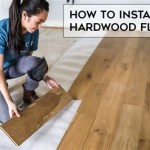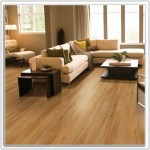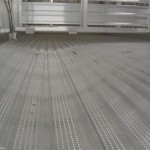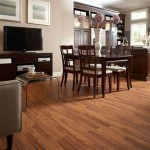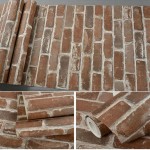Gray Spots On Hardwood Floor After Cleaning With Vinegar And Baking Soda: Understanding the Issue and Solutions
Hardwood floors, celebrated for their natural beauty and durability, require diligent care to maintain their aesthetic appeal and structural integrity. While regular cleaning is essential, the use of improper cleaning methods or solutions can inadvertently lead to damage. One common concern among homeowners is the appearance of gray spots on the hardwood floor surface after cleaning with a mixture of vinegar and baking soda. This article aims to explore the reasons behind this phenomenon and provide guidance on appropriate cleaning alternatives to prevent such issues.
The popularity of vinegar and baking soda as cleaning agents stems from their perceived natural and non-toxic properties. Many individuals utilize these household staples as alternatives to commercial cleaning products, believing them to be safer for their families and the environment. However, the interaction of these substances with hardwood floor finishes can produce unintended and undesirable results. It's crucial to understand the chemical properties of these ingredients and their potential effects on various hardwood floor finishes before employing them for cleaning purposes.
The appearance of gray spots typically indicates damage to the floor's finish or even the wood itself. The severity of the damage can vary depending on the type of finish, the concentration of the cleaning solution, and the duration of exposure. In some cases, the graying may be superficial and relatively easy to address, while in other situations, the damage could be more extensive and require professional intervention.
The Chemical Interaction: Vinegar, Baking Soda, and Hardwood Finishes
Vinegar, a dilute solution of acetic acid, possesses acidic properties. Baking soda, or sodium bicarbonate, is a mild alkali. When combined, they react to produce carbon dioxide, water, and sodium acetate. While this reaction might seem harmless, the acetic acid in vinegar can be detrimental to certain hardwood floor finishes. Many hardwood floors are coated with polyurethane, varnish, or similar protective layers. These finishes are designed to shield the wood from moisture, scratches, and everyday wear and tear. However, prolonged or repeated exposure to acidic substances like vinegar can degrade these finishes.
The acidic nature of vinegar can etch or dull the finish, creating a cloudy or hazy appearance. This is because the acid attacks the polymer chains that make up the finish, weakening its structure and reducing its protective capabilities. The baking soda, acting as a mild abrasive, can further exacerbate the damage, especially when used in conjunction with vigorous scrubbing. The combination can create micro-scratches in the finish, contributing to the overall dullness and graying effect.
Furthermore, if the finish is compromised, the vinegar and water solution can penetrate the wood itself. Hardwood, being a porous material, readily absorbs liquids. Once moisture enters the wood, it can cause swelling, warping, and staining. The gray discoloration may then represent actual staining of the wood fibers, making it more difficult to rectify. The sodium acetate residue left behind after the reaction can also contribute to a dull or sticky film on the floor surface, attracting dirt and further diminishing the floor's appearance.
Identifying the Type of Finish and Assessing the Damage
Determining the type of finish applied to the hardwood floor is crucial before attempting any cleaning or restoration efforts. Different finishes react differently to various cleaning agents. Common types of hardwood floor finishes include polyurethane, varnish, lacquer, shellac, and wax. Polyurethane is generally more resistant to chemical damage than other finishes, while wax finishes are particularly vulnerable to moisture and acidic substances.
A simple test can help identify the type of finish. In an inconspicuous area, such as under a piece of furniture or in a closet, apply a small amount of denatured alcohol. If the finish becomes sticky or dissolves, it is likely shellac or lacquer. If the finish remains intact, it is likely polyurethane or varnish. Wax finishes can be identified by their soft, easily scratched surface.
Once the type of finish is identified, assess the extent of the damage. Superficial graying may only affect the surface of the finish and can potentially be addressed with specialized cleaning products or polishing compounds designed for hardwood floors. If the gray spots are deep or accompanied by other signs of damage, such as warping, cupping, or staining, professional refinishing may be necessary.
Examine the affected area closely under good lighting. Look for signs of etching, dullness, scratches, or water damage. If the gray spots are uneven or have a blotchy appearance, it may indicate that the vinegar and baking soda solution was not evenly applied or removed. If the graying is accompanied by a sticky or oily residue, it suggests that the cleaning solution was not properly rinsed.
Alternative Cleaning Methods and Preventative Measures
To avoid the issue of gray spots and other forms of damage, alternative cleaning methods that are specifically designed for hardwood floors should be employed. These methods prioritize the preservation of the floor's finish and the integrity of the wood itself. The use of pH-neutral cleaners formulated for hardwood floors is highly recommended. These cleaners are gentle on the finish yet effective at removing dirt and grime.
When selecting a cleaning product, carefully read the label and ensure that it is specifically formulated for the type of finish on the hardwood floor. Avoid products that contain harsh chemicals, abrasives, or excessive amounts of water. Always test the cleaner in an inconspicuous area before applying it to the entire floor to ensure that it does not cause any discoloration or damage.
Proper cleaning techniques are just as important as selecting the right cleaning product. Use a microfiber mop or cloth to apply the cleaner evenly and avoid over-wetting the floor. Wring out the mop or cloth thoroughly to remove excess moisture. Clean the floor in sections, overlapping each pass slightly to ensure complete coverage. After cleaning, dry the floor immediately with a clean, dry microfiber cloth to prevent water spots and further damage. Regular sweeping or vacuuming is also essential to remove loose dirt and debris that can scratch the floor's finish.
In addition to proper cleaning methods, preventative measures can help minimize the risk of damage to hardwood floors. Use mats or rugs at doorways and in high-traffic areas to protect the floor from dirt, scratches, and moisture. Avoid wearing shoes with hard soles or high heels on the hardwood floor. Trim pets' nails regularly to prevent them from scratching the floor. Clean up spills immediately to prevent staining and water damage. Maintain a consistent humidity level in the home to prevent the wood from expanding and contracting, which can lead to warping and cracking.
For routine cleaning, a simple damp mopping with water and a small amount of pH-neutral cleaner is often sufficient. Avoid using steam mops on hardwood floors, as the excessive moisture can penetrate the finish and damage the wood. If the floor is heavily soiled, consider using a specialized hardwood floor cleaning product that is specifically designed for deep cleaning. Always follow the manufacturer's instructions carefully.
Addressing gray spots or other damage promptly can prevent the problem from escalating. If the damage is minor, it may be possible to repair it with a touch-up kit or a polishing compound. However, if the damage is extensive, professional refinishing may be the only option. Refinishing involves sanding down the existing finish and applying a new coat of finish, which can restore the floor to its original beauty. Consulting with a qualified flooring professional is crucial to assess the damage and determine the most appropriate course of action.
By understanding the potential risks associated with using vinegar and baking soda on hardwood floors and implementing appropriate cleaning methods and preventative measures, homeowners can maintain the beauty and longevity of their hardwood floors for years to come. Choosing the right cleaning products, employing proper cleaning techniques, and addressing damage promptly are essential for preserving the integrity and aesthetic appeal of this valuable investment.

How To Remove Stains From Wood The Craftsman Blog

The Best Way To Remove Stains From Wood Floors Maria Louise Design

Options For Fixing The Dreaded Pet Stains On Wood Floors Floor Business

Removing Dog Urine Stains From Hardwood Floors Hometalk

The Best Way To Remove Stains From Wood Floors Maria Louise Design

The Best Way To Remove Stains From Wood Floors Maria Louise Design

The Best Way To Remove Stains From Wood Floors Maria Louise Design

How To Remove Pet Urine Stains From Wood Floors Guaranteed

Top Tips On How To Remove Black Stains From Hardwood Floors Leader Blog

How To Remove Pet Stains From Hardwood Floors
Related Posts



